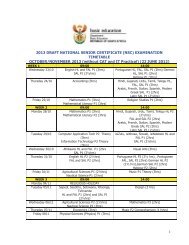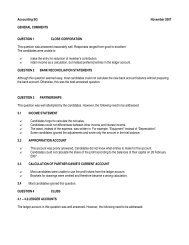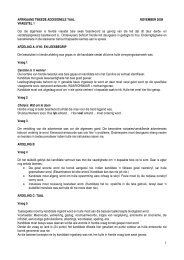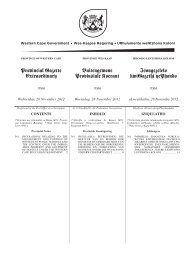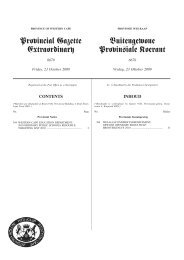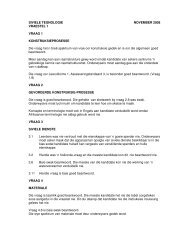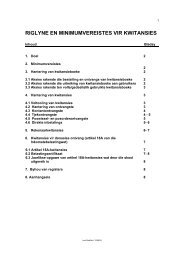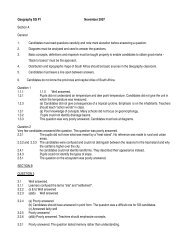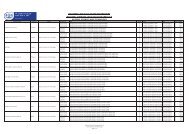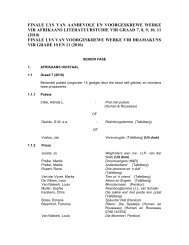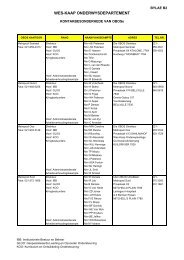Music SG P1 November 2007 1. SUGGESTIONS 1.1 It would ...
Music SG P1 November 2007 1. SUGGESTIONS 1.1 It would ...
Music SG P1 November 2007 1. SUGGESTIONS 1.1 It would ...
Create successful ePaper yourself
Turn your PDF publications into a flip-book with our unique Google optimized e-Paper software.
QUESTION 4This is a question which, on the whole, presented no problems. Most answered this excellently and this is the question whichshould be answered first during any examination. 4.1 <strong>It</strong> is important to state the key, as well as the chord and position of thechord e.g. b minor iv second inversion 4.2 Most candidates answered (i) correctly, but confused G major and D major whennaming the cadence in (ii).4.3 Remember to describe the non-harmonic notes clearly and accurately, e.g. unaccented passing note and not justpassing note.QUESTION 5This question was answered fairly well, although candidates often did not recognise the passing and cadential progressions.The cadential progression must to be used specifically at the end of the last phrase. Very few candidates were able to usethe cadential progression correctly. The use of the dominant quartad (V7) with correct resolution needs attention. Rememberthat each phrase will end in a specific key with a suitable cadence (perfect; interrupted) and end the composition with thecadential progression using a perfect cadence. Most candidates were able to recognize the main key (A major) and themodulation to the dominant major (E major) at the end of the first phrase. No other modulation occurs in this question. Mostnon-harmonic notes are easily recognized and occur in the soprano voice. The suspension in bar 7 was mostly notrecognized. The harmonic rhythm is essentially a crochet beat harmony. Some candidates harmonised every note, includingthe quavers, which are actually non-harmonic notes. Once again, remember that leading notes must rise and that V can onlyresolve to i or VI.




